Boots that are EH (Electrical Hazard) rated need to have an outer surface that is non-conductive to prevent electrical charges from passing through your body.
EH-rated boots can have either a composite or steel toe. Boots with ASTM F2413 rating are tested to withstand 18,000 volts for up to a minute under dry conditions.
You can find EH-rated work boots, shoes, and even cowboy boots.
Wearing work boots isn’t always about protecting your feet from heavy objects.
There are a lot of nasty surprises in the workplace for the unwary, and one of the worst and most common is electric shocks. You don’t have to be an electrician to need protection from electric shocks—if you use power tools, you’re likely to be dealing with electricity.
Protecting yourself from electric shocks is probably the last thing you worry about when buying work boots (if you even think of it at all).
Nobody “needs” a lifeguard until they’re drowning, and it’s the same with EH-rated boots. As the saying goes—fail to prepare, prepare to fail.
By the end of this guide, you’ll know which professions should consider wearing EH protection, how to identify an EH-rated boot why choosing boots with an EH could save your life even if you’re never dealing with electricity.
Table of Contents
Do I Need EH (Electrical Hazard) Boots?
Around 400 US citizens die each year from electrocution, and while that’s a low figure, the following statistic may make you reconsider your stance on EH boots. Annually, 4,000 US citizens suffer non-fatal electrocution.
That’s a much more worrying number, and just to alarm you even further, 9% of electrocution fatalities are attributed to power tools. From all the daily risks you take, from crossing the road to eating that out-of-date bagel, electrocution ranks sixth in the US.
Which Professions Should Wear EH Boots?
The most obvious answer is electricians, but in reality, if you work a trade, you should always assume that there’s some risk, whether you can see it or not.
According to the U.S. Consumer Product Safety Commission, landscaping, gardening, and using farm equipment account for 67% of annual electrocutions.
If you rang ten plumbers out of the phone book, you’d speak to at least two who have had an electric shock before. Drilling into walls and catching a loose electrical wire or faulty power tools all increase the risk of the unexpected happening.
Underground cables might be safe, but if you’re digging a ditch and accidentally cut through a cable with your shovel, EH-rated boots can save your life. If you’re working in a trade, using power tools, or working around large electrical equipment, it’s best to err on the side of caution.
Which Boots Are EH-Rated?
Most safety boots designed for work should be EH-rated because to meet typical safety requirements, boots must meet impact and compression resistance standards.
Luckily for us, as part of those specifications, your work boots also need to be EH-rated (amongst other things, such as chainsaw cut-resistant and puncture resistant).
To find out if your boot is EH-rated, look inside at the label as it should be stitched inside as per regulations. If you’re unsure, it’s best to speak to the manufacturer rather than assume the best.
If you’re looking to buy new boots, the technical specifications are available online, usually on the product description of the boots.
For example, the Red Wing Traction Tred Lite states in its technical specifications that it meets ASTM F2413-18 EH standards, making it an ideal work boot for protecting you from electrical hazards.
The Traction Tred Lite is ideally suited for day-to-day work as a lightweight comp toe boot with a low-profile sole. They have excellent grip, offer superb waterproofing, and are incredibly comfortable. These EH-rated boots are particularly ideal for electricians as they’re light yet rugged.
If it’s a cowboy boot you prefer, there are plenty of choices. Ariat’s WorkHog Waterproof Comp Toe Work Boot clearly states that it meets safety regulations.
Even cowboys prefer to avoid electric shocks, and the Ariat WorkHog is perfect for slipping on for a long working day, secure in the knowledge that your feet are protected from impacts and electricity. With superb detailing and a rugged, waterproof leather upper, why compromise on safety or style?
This example is even more telling, as it states it’s ASTM F2413 rated, so you know your feet are protected, but also that it meets ASTM standards for EH safety, with, you guessed it, the same ASTM F2413 rating.
Ariat felt the need to point out both benefits separately, even though they both come under the same safety regulation. If you’re buying new boots that are ASTM F2413 rated but don’t mention being EH-rated, you’ll know that the regulation encompasses both needs.
If you’ve always assumed that steel toe boots can’t be EH-rated as there’s a big lump of steel at the front of your boot, think again.
Being EH-rated means the upper and sole of your boots are non-conducive, and as the steel toe is inside your boot, any brush with electricity won’t matter. The rubber outer layer stops the electricity from passing through your body.
The Ariat Treadfast 6” Steel Toe Work Boot may have a steel toe, but just like the WorkHog cowboy boot, it is ASTM F2413 rated, making it a great choice if you need additional toe protection as well as electrical hazard safety.
A classic design always stays in fashion, and the Ariat Treadfast is a great all-rounder of a work boot. Waterproof, with an excellent cushioned insole for those days when you’re on your feet for hours, the Treadfast ticks all the boxes. Rated ASTM F2413, these keep your feetprotected from impact, compression, and electrical hazards, making them ideal for any jobsite.
Can Boots Lose Their EH Rating?
In the same way your comp toe boots might need replacing if they suffer any severe damage, your boots can lose their EH rating if they’ve started to wear down.
Your boots will only stop electrical current while there’s a protective outer layer of non-conductive materials between you and the outside world.
After a while, your toe cap may start showing through, or the sole of your boot may begin to wear down until it’s no longer forming the protective barrier that makes your boots EH-rated.
If you’re in doubt, it’s best to assume that once your boots show signs of wear and tear, they’re no longer EH-rated. It’s a judgment call whether you replace them.
After all, they’ll still be safe enough to repel physical damage and comfortable after being worn for so long. If you work around live electricity, I recommend replacing your old boots.
As long as your boots are in good condition, they should remain EH-rated, but that doesn’t mean they’re all you need to protect yourself from electric shocks.
Don’t forget that EH-rated boots aren’t your first and last line of defense. They’re there as part of your toolkit to keep you safe. There are also situations where they’re not at their best, such as wet conditions or areas where static electricity is the issue.
The Shocking Conclusion
While most work boots are ASTM F2413-18 rated, you should always check the specifications of a boot before buying them.
It’s great that electrical hazard safety is a part of standard safety measures.
Whether you prefer a comp toe boot like the Red Wing Traction Tred Lite or a more traditional steel toe such as Ariat Treadfast 6” Waterproof Steel Toe Work Boot, you know you’re getting the protection you need from unexpected electric shocks.
The Traction Tred Lite is ideally suited for day-to-day work as a lightweight comp toe boot with a low-profile sole. They have excellent grip, offer superb waterproofing, and are incredibly comfortable. These EH-rated boots are particularly ideal for electricians as they’re light yet rugged.
Whether you work around electricity or not, you should always look for the ASTM F2413 rating, as anyone from a gardener to an electrical engineer needs to be able to work safely.
A classic design always stays in fashion, and the Ariat Treadfast is a great all-rounder of a work boot. Waterproof, with an excellent cushioned insole for those days when you’re on your feet for hours, the Treadfast ticks all the boxes. Rated ASTM F2413, these keep your feetprotected from impact, compression, and electrical hazards, making them ideal for any jobsite.
FAQs
How do I know if my boots are EH-rated?
To check if your existing work boots are EH-rated, check inside the boot to find a label stitched inside. The label is often on the tongue of the boot and will tell you if your boots meet ASTM regulations for impact, compression, and electrical hazards. Always check the specifications on the sellers’ website for new boots or contact the manufacturer.
What is the difference between SD and EH boots?
The main difference between SD (Static Dissipation) and EH boots is that EH boots are worn to prevent you from being electrocuted, and SD boots are worn in areas with a high risk of fires or explosions. SD boots dissipate any static that your body or movement may cause, reducing the risk of static sparks that can result in a fire or explosion.
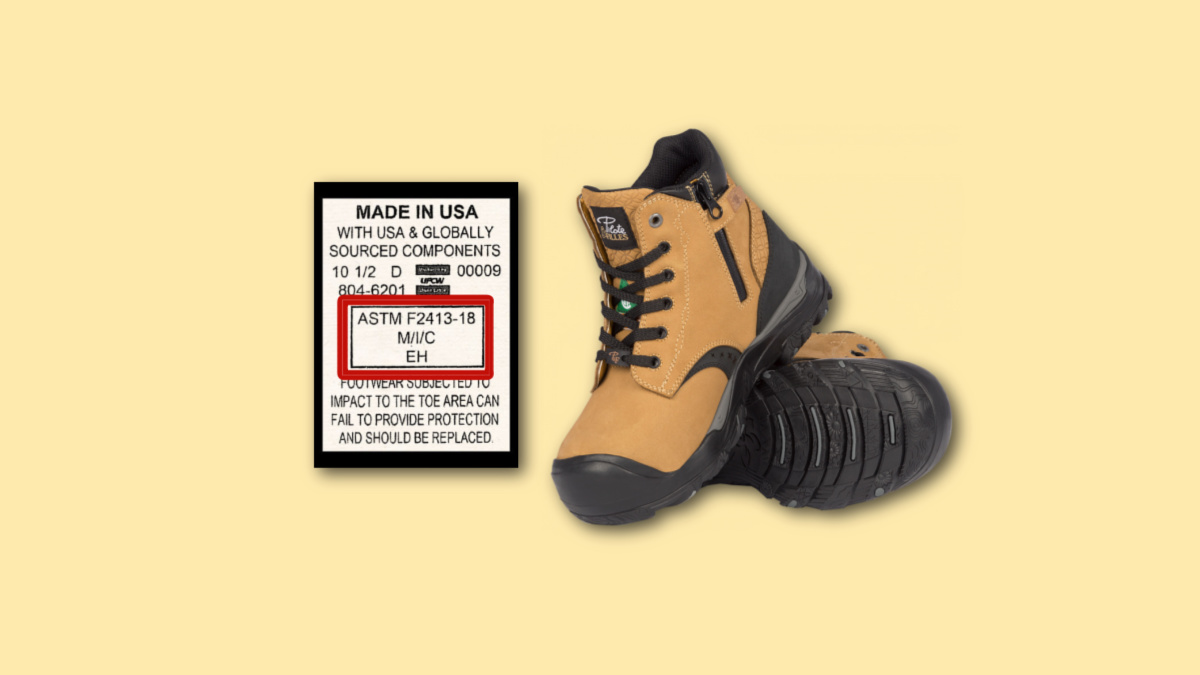
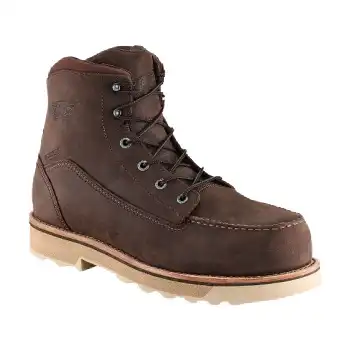
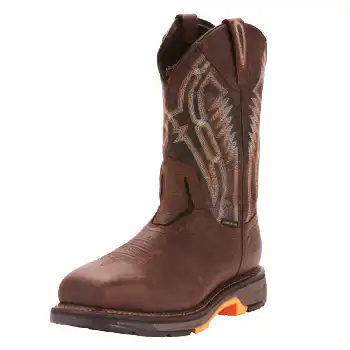
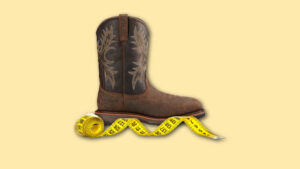

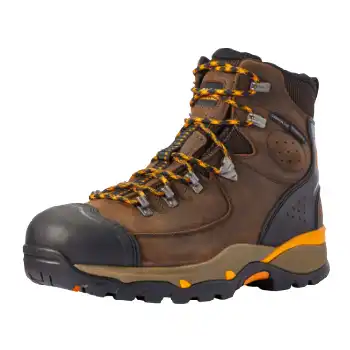


Join the Discussion